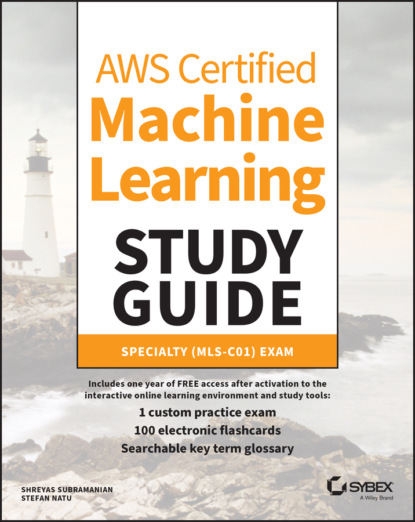to www.wiley.com/go/sybextestprep, register your book to receive your unique PIN, and then once you have the PIN, return to www.wiley.com/go/sybextestprep and register a new account or add this book to an existing account.
Conventions Used in This Book
This book uses certain typographic styles in order to help you quickly identify important information and to avoid confusion over the meaning of words such as on-screen prompts. In particular, look for the following styles:
Italicized text indicates key terms that are described at length for the first time in a chapter. (Italics are also used for emphasis.)
A monospaced font indicates the contents of configuration files, messages displayed at a text-mode Linux shell prompt, filenames, text-mode command names, and Internet URLs.
Italicized monospaced text indicates a variable—information that differs from one system or command run to another, such as the name of a client computer or a process ID number.
Bold monospaced text is information that you're to type into the computer, such as at a shell prompt. This text can also be italicized to indicate that you should substitute an appropriate value for your system.
In addition to these text conventions, which can apply to individual words or entire paragraphs, a few conventions highlight segments of text:
A note indicates information that's useful or interesting but that's somewhat peripheral to the main text. A note might be relevant to a small number of networks, for instance, or it may refer to an outdated feature.
A tip provides information that can save you time or frustration and that may not be entirely obvious. A tip might describe how to get around a limitation or how to use a feature to perform an unusual task.
Warnings describe potential pitfalls or dangers. If you fail to heed a warning, you may end up spending a lot of time recovering from a bug, or you may even end up restoring your entire system from scratch.
Real-World Scenario
A real-world scenario is a type of sidebar that describes a task or an example that's particularly grounded in the real world. This may be a situation we or somebody we know has encountered, or it may be advice on how to work around problems that are common in real, working ML environments.
AWS Certified Machine Learning Specialty Exam Objectives
AWS Certified Machine Learning Study Guide has been written to cover every AWS exam objective at a level appropriate to its exam weighting. The following table provides a breakdown of this book's exam coverage, showing you the weight of each section and the chapter where each objective or subobjective is covered:
| Subject Area | % of Exam |
|---|---|
| Domain 1: Data Engineering Domain 2: Exploratory Data Analysis Domain 3: Modeling Domain 4: Machine Learning Implementation and Operations | 20% 24% 36% 20% |
| Total | 100% |
Domain 1: Data Engineering
Subdomain 1.1: Create Data Repositories for Machine Learning
| Exam Objective | Chapter |
|---|---|
| 1.1-1. Create data repositories for machine learning | 5 |
| Identify data sources | 5 |
| Determine storage mediums | 2, 5 |
Subdomain 1.2: Identify and Implement a Data Ingestion Solution
| Exam Objective | Chapter |
|---|---|
| 1.2-1. Data job styles/types (batch load/streaming) | 6, 7 |
| 1.2-2. Data ingestion pipelines | 7 |
| Kinesis | 7 |
| Kinesis Analytics | 7 |
| Kinesis Firehose | 7 |
| EMR | 7 |
| Glue | 7 |
| 1.2-3. Job scheduling | 7, 15 |
Subdomain 1.3: Identify and Implement a Data Transformation Solution
| Exam Objective | Chapter |
|---|---|
| 1.3-1. Transforming data transit (ETL: Glue, EMR, AWS Batch) | 6 |
| 1.3-2. Handle ML-specific data using map reduce (Hadoop, Spark, Hive) | 6, 7 |
Domain 2: Exploratory Data Analysis
Subdomain 2.1: Sanitize and Prepare Data for Modeling
| Exam Objective |
Chapter
|
|---|
